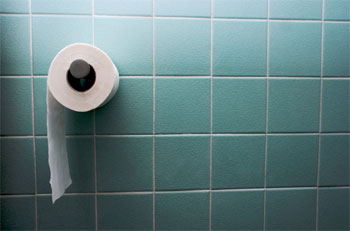Bladder Health 101: Tips to Improve Bladder Control

Bladder Health 101: Tips to Improve Bladder Control
We all have one. Yet the health of our bladder isn't something many of us give much thought to – at least, not until something goes wrong with it!
It's important to know how to take care of your bladder, and to get the right advice for your age and life stage. Throughout your life, your daily habits and practices can put you in a better position to avoid bladder leakage or loss of bladder control, also known as urinary incontinence.
Here, Jean Hailes' own bladder guru, continence and pelvic floor physiotherapist Janetta Webb, explains how to treat your bladder well at every life stage.
For young women (and all women needing to know the basics)
Don't go to the toilet if you don't need to go. Many girls and young women are taught to empty their bladders before they go out, before long car trips, or when they arrive at their destination. Instead, listen to your body's messages and pay attention to your natural urges. Your bladder works best when it can tell you when it needs to be emptied, rather than the other way around!
You can't get an infection from a toilet seat, so please sit down. Your bladder empties itself much better when you are seated and relaxed on the toilet. If you need to, use a disposable toilet seat cover, but don't get into the habit of hovering over the toilet.
Don't strain to empty your bladder. When urinating, relax, take your time and let your bladder set the pace.
Any bladder leakage in young women and girls shouldn't be ignored. If you (or your daughter) get any sort of bladder leakage – for example, when playing sport, laughing, sneezing or jumping on a trampoline – visit your GP and get it treated early.
Bowel health affects bladder health. Being constipated is a common cause of urinary incontinence in girls and young women. Keep your bowels in check by staying hydrated, eating a diet rich in fibre and whole foods (such as fruits, vegetables and wholegrains) and exercising regularly.
How much water should you be drinking? Unless instructed otherwise by your doctor, aim to drink 1.5-2 litres of fluids every day. This includes everything that you drink, not just water. There is no evidence to support that drinking more than this is healthier. If leakage is an issue, switch to decaffeinated coffee and tea.
For pregnant women
Up to half of pregnant women experience urinary incontinence, so special attention needs to be given to your bladder (and urinary system) during this time.
Dedicate a daily session to your pelvic floor. To avoid incontinence in pregnancy, learn how to correctly exercise your pelvic floor muscles (the 'sling' of muscles that support the bladder, bowel and womb). Set aside a dedicated time to do your pelvic floor exercises every day, while doing nothing else.
Squeeze at pressure points. Additionally, get into the habit of squeezing your pelvic floor muscles while doing activities that put more pressure on your bladder; for example coughing, sneezing, bending or lifting.
Change is normal. It's normal for pregnant women to urinate more frequently and to need to use the toilet during the night. But watch out for constipation, which is common during pregnancy (see tips above regarding bowel health and fluid intake).
Don't ignore pain. Lower back pain or pelvic joint pain during pregnancy can impact your pelvic floor. Seek a referral to a physiotherapist who specifically treats these conditions – find one by visiting the Australian Physiotherapy Association website.
Keeping fit is key. However, make sure it's pregnancy-appropriate exercise.
For postpartum women
The first few days and weeks after birth are a crucial time for your pelvic floor. While you're in hospital after the birth, lie down and rest as much as possible. Start your pelvic floor exercises as soon as you can do so comfortably, without any pain.
Get some extra support. Postnatal compression garments give extra support. Additionally, when first using your bowels after giving birth, and in the first few weeks after, support your perineum with your hand.
Exercise caution with heavy loads. Try to avoid lifting anything heavier than your baby in the first six weeks after birth.
Return to a healthy fitness as soon as you are comfortable. One of the best exercises is walking. But if you experience bladder leakage with any exercise (such as jogging or gym workouts), it's your body telling you that you are not yet ready for that particular form of exercise. Again, seek treatment for leakage early.
A note for breastfeeding mums. Breastfeeding keeps your levels of the hormone oestrogen low. As oestrogen supports bladder control, you will therefore rely even more on good pelvic floor strength.
For menopausal & postmenopausal women
Incontinence issues often arise in menopause. This is due to the falling levels of oestrogen, which can impact bladder control. Incontinence is also more common after gynaecological surgery.
Night-time bladder habits. If you wake during the night because of insomnia or night sweats, don't just go to the toilet for 'something to do', or to help you get back to sleep. Empty your bladder only when needed.
Urinary tract infections are more common in midlife women. This is because of the reduction of oestrogen. Seek advice from your GP.
Tips for healthy ageing
Maintain your levels of fitness. The fitter you are, the better your flexibility, strength and endurance will be. This not only means you'll be more able to maintain pelvic floor strength, but also helps with the practicalities of making it to the toilet in time.
Get back pain and hip pain treated. Don't allow pain to limit your mobility.
Learn more about bladder health and urinary continence by visiting the Jean Hailes Bladder & bowel webpages.
Published with the permission of Jean Hailes for Women's Health
1800 JEAN HAILES (532 642)
MORE



